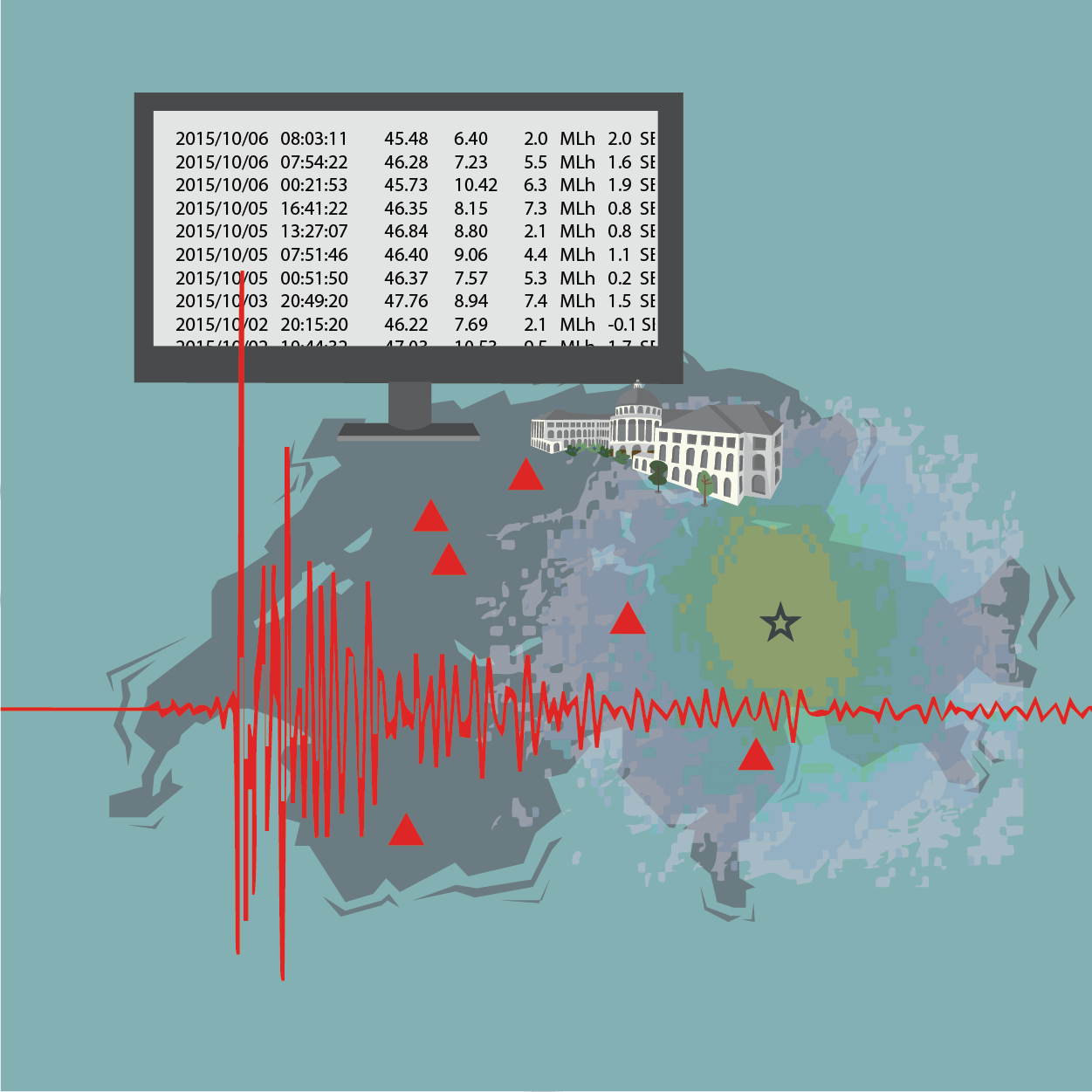Monitoring, alerting and analysis
The monitoring, alerting, and analysis section operates Switzerland's national seismic network and uses it for basic and applied seismological research. The key objectives are to provide timely earthquake information and alerts through multiple channels and analyse seismic activity across the country. Alerts are sent to a wide range of users, including federal and cantonal offices, as well as the general public. The section focuses on all aspects of network seismology and associated science, from earthquake early warning (EEW) to final curated earthquake catalogues; pioneering research helps us continuously improve our products and services.
The section also provides seismotectonic interpretation for seismicity in Switzerland and surrounding regions. It manages local network densifications around anthropogenic industrial activities that may induce seismicity, such as geothermal exploration and tunnelling, while providing dedicated monitoring and alerting services. Additionally, the section develops real-time seismology software used extensively across Europe and globally.
The seismic monitoring and alerting of Switzerland is built on the dense and modern national seismic network comprising over 400 real-time stations, including more than 200 permanent stations. These are part of the national broadband and strong-motion networks and are supplemented by temporary networks, aftershock stations, school seismometers, and stations near the country's borders operated by foreign agencies. This extensive network ensures detailed earthquake detection. It is capable of seamlessly recording all earthquakes of magnitude 1.5 across Switzerland, and in many areas, even below magnitude 1.
The section collaborates closely with national and international stakeholders to maintain and enhance monitoring capabilities. It plays a crucial role in research, education, and public outreach, ensuring that seismological information is accessible and supporting preparedness. It is responsible for the organisation of two SED pikett (duty) service teams that provide an immediate manual review of felt earthquakes, manage the earthquake catalogue and maintain the 24-7 IT operations of the SED. The section further coordinates aftershock deployments after significant earthquakes in Switzerland and neighbouring countries.
The section is headed by Dr. John Clinton and is divided into four research groups.
